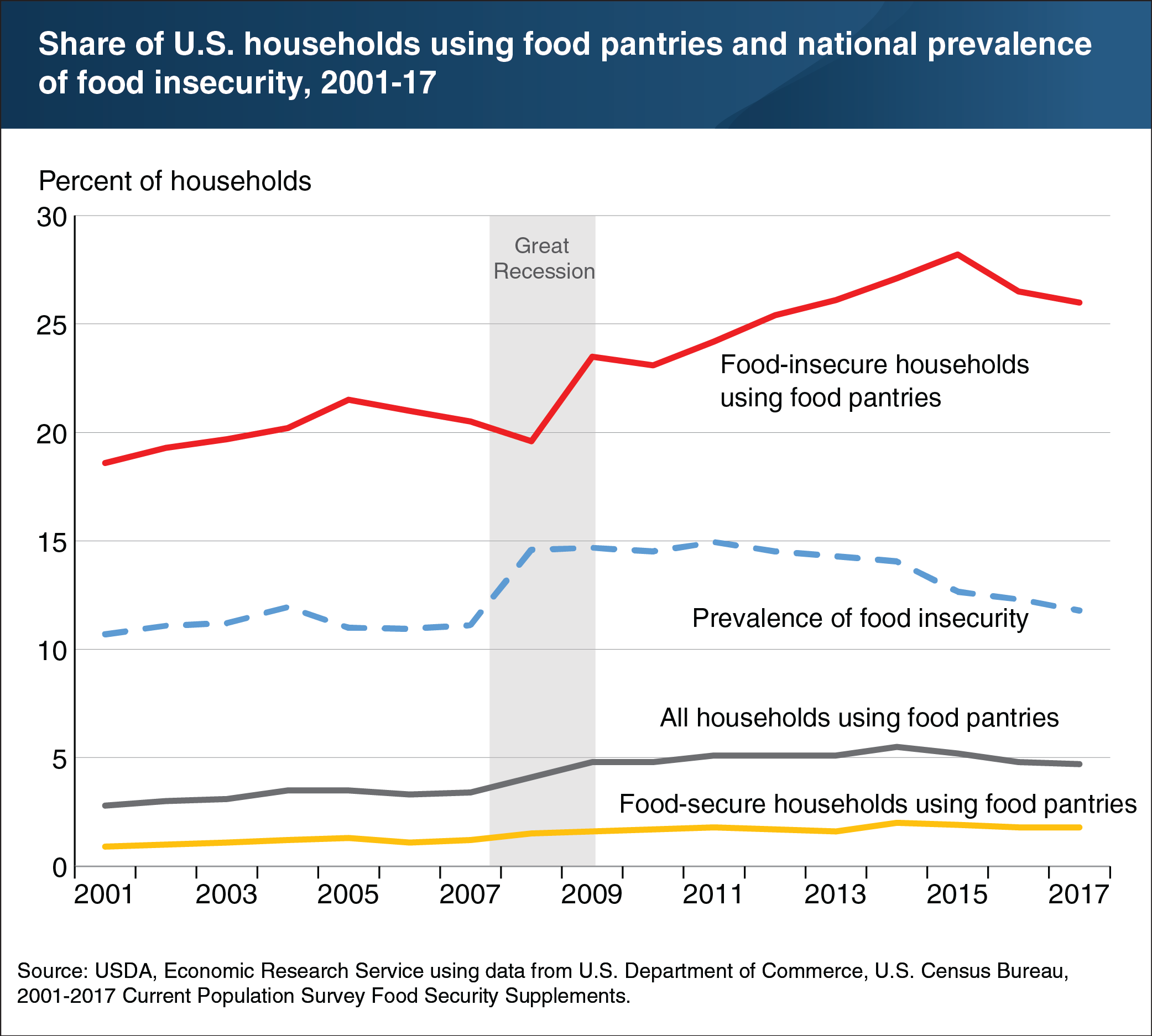Food pantry use by food-insecure households in 2017 was about five times the rate for all U.S. households
- by Alisha Coleman-Jensen
- 11/14/2018

In 2017, 4.7 percent of U.S. households reported getting emergency food from food pantries. Food pantries distribute unprepared foods for families to prepare at home. Using a food pantry is more common among food-insecure households—those that have difficulty at some time during the year providing enough food for all their members—than among the general population or food-secure households. In 2017, 26 percent of food-insecure households used a food pantry—more than five times the rate for all U.S. households—which is down from 28.2 percent in 2015 but higher than the 18.6 percent that visited food pantries in 2001. The greater use of food pantries in recent years is likely due in part to greater need, as the national prevalence of food insecurity was higher in 2017 than it was in 2001. In addition to more need, greater use of food pantries over time may also be due to an increase in the number of food pantries. This chart appears in “Food Pantries Provide Emergency Food to More Than One-Quarter of Food-Insecure Households” in the November 2018 issue of ERS’s Amber Waves magazine.
We’d welcome your feedback!
Would you be willing to answer a few quick questions about your experience?

